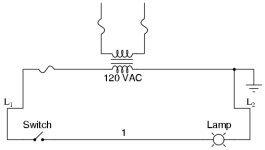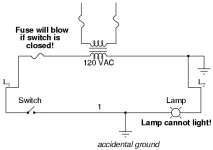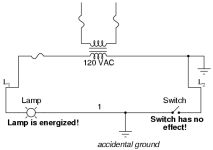Hi,
I have attached 3 photos of a circuit diagram. I posted this because I am in doubt of its correction especially that the L2 is being connected to ground.
It also confuses me what the accidental ground means & how it differs from the ground that L2 is connected with.
I hope you find time to comment. Thanks.



I have attached 3 photos of a circuit diagram. I posted this because I am in doubt of its correction especially that the L2 is being connected to ground.
It also confuses me what the accidental ground means & how it differs from the ground that L2 is connected with.
I hope you find time to comment. Thanks.








